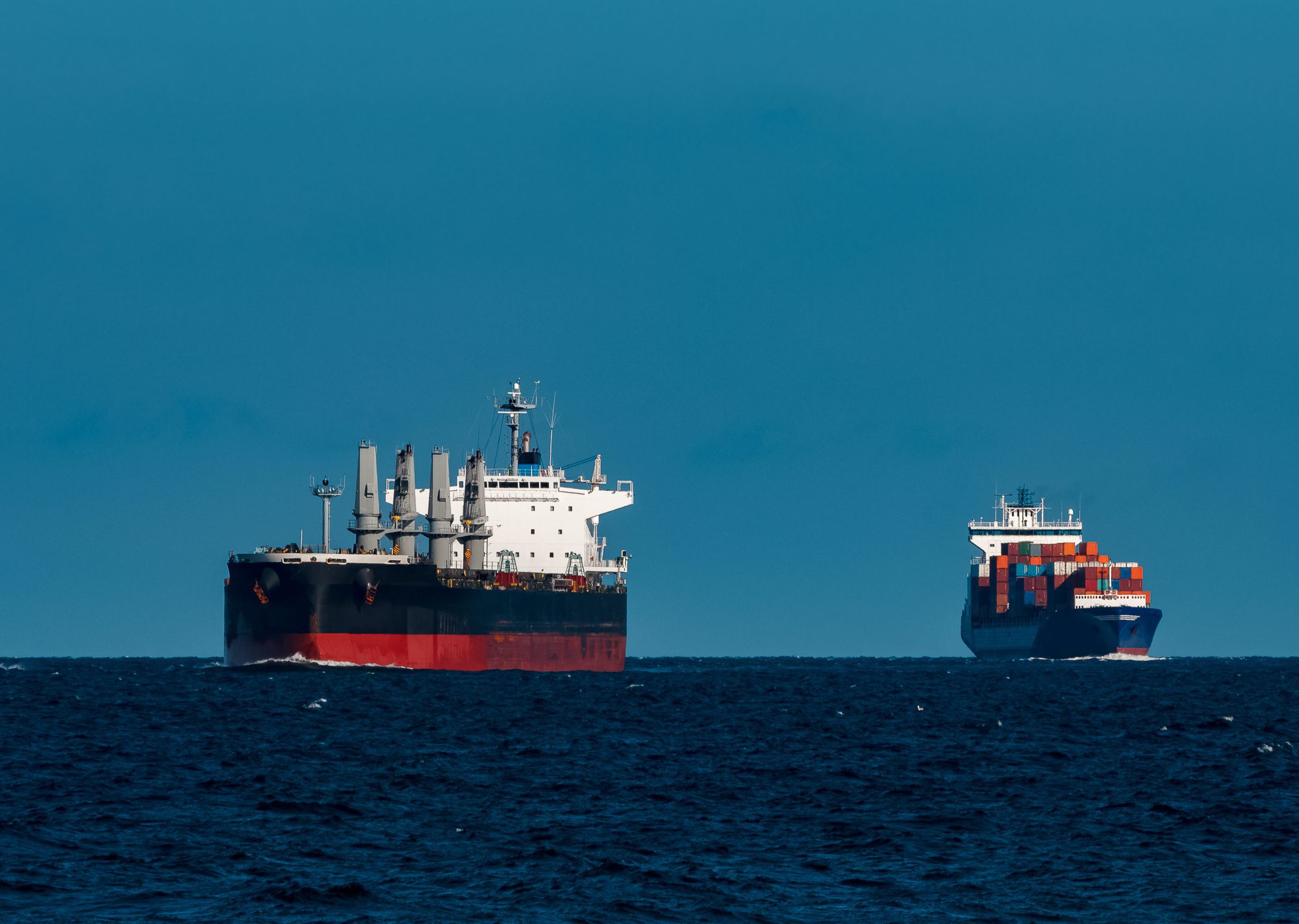by John Konrad (gCaptain) As the world has almost fully recovered from the COVID-19 pandemic—the worst global health crisis since the Great Influenza of 1918—one brutal lesson stands out: global trade can be brought to its knees in a heartbeat. The pandemic exposed the fragility of modern life, highlighting how interconnected and vulnerable our systems are. But what if the next catastrophe isn’t biological or even a naval war—both ever-present threats in history’s narrative? Imagine instead a digital apocalypse: a computer virus spreading faster than any disease, or worse—a natural electromagnetic event that disables every system we depend on. Far-fetched? Not at all. While we’ve strengthened our defenses against hackers, there’s no firewall against nature’s wrath. The next global disaster might not target humans directly—it could be coming for the machines we can’t live without.
On the unforgettable day of September 2, 1859, British astronomer Richard Carrington made a remarkable discovery – a larger white flare on the sun. His observation of the first Coronal Mass Ejection (CME) was confirmed by others and soon after the mesmerizing Polar Lights aurora dipped down as far as Cuba. But the event brought more than celestial beauty. This phenomenon had a remarkable effect on the telegraph wires – the most advanced technology of the time. Across the United States and Europe, malfunctions caused communication chaos and ignited wildfires. It was a remarkable event that wreaked havoc that was manageable mostly because it occurred nearly two decades before telephones and 23 years before the first centralized commercial generation of electricity
A Coronal Mass Ejection (CME) is a massive eruption of solar plasma and magnetic fields from the Sun’s outer atmosphere, blasting billions of tons of charged particles into space at speeds of several million miles per hour. When these solar eruptions collide with Earth’s magnetic field, they can trigger geomagnetic storms capable of disrupting power grids, satellite communications, and ship navigation systems, causing widespread technological disturbances.
Related Book: How the World Really Works: The Science Behind How We Got Here and Where We’re Going by Vaclav Smil
“Even limited damage would mean hours or days of disrupted communications and grid operations,” wrote Vaclav Smil in his 2022 book How The World Really Works. “A massive geomagnetic storm would sever all of these links on a global scale… Estimates of global damage differ by an order of magnitude, from $2 trillion to $20 trillion, but that refers only to expenditures, not to the value of lives lost during prolonged spells without communication, lights, air conditioning, hospital equipment, refrigeration, and industrial production.”
The 2012 Mega CME
The most recent mega-CME occurred in 2012 and was so powerful that it was visible from Earth as a bright flash in the sky. It was also detected by several spacecraft, including NASA images from its Solar Dynamics Observatory and the Solar and Heliospheric Observatory. The CME was estimated to be about 10 times larger than any other CME ever recorded by modern equipment and is thought to be comparable to the Carrington event.
But the 2012 CME did not destroy satellites or damaged much electrical equipment worldwide. Why? Sunspots are highly directional and depend on the location of the sun and where on the giant mass the ejection occurs. The 2012 CME wasn’t pointing at us and the sun’s slow rotational period of about 25 days resulted in the electromagnetic beam missing Earth with a margin of approximately nine days.
Related Book: Surviving EMP – A EMP and CME Preparedness Guide: Preparing for Electromagnetic Pulse and Coronal Mass Ejection Events
The 2012 CME was an impressive event, and it serves as a reminder of the power of the sun. CMEs can cause significant disruption to our technology, and it is important to be prepared for them. Scientists are continuing to study CMEs in order to better understand their behavior and to develop ways to mitigate their effects but there might be little we can do to prevent a mass-chaos because modern electrical devices are not designed to survive billions of tons of solar expulsions explosively pointed straight at earth.
Today we are much more vulnerable than Carrington‘s contemporaries were in 1859 and only slightly more prepared than we were in 2012. Devices are more prevalent today and lower-cost electronics mean less shielding is provided. Simple solutions like placing phones in homemade faraday cages made from trash cans or purchasing low-cost faraday bags on Amazon could protect small devices like cell phones but will these be hoarded like toilet paper was in 2020? How much time would we have to prepare?
How Much Time Do We Have To Prepare?
The good news is the sun is very far away. The discharge from CMEs expands as it moves through space and moves slower than the speed of light at speeds between 250 km/s and 3,00 km/s. This will provide us with between about 15 hours and nearly seven days to prepare but only when the leading edge of the disturbance reaches the Solar and Heliospheric Observatory (SOHO), a European Space Agency spacecraft located 1.5 million kilometers away from the Earth, could we accurately gauge its intensity. By then the time to react would be reduced to less than an hour, perhaps even to just 15 minutes.
The good news is that ships are still required to carry at least one sextant and ships officers are still trained in celestial navigation. It might be hard for households to find enough metal baskets to make Do-it-yourself faraday cages but modern ships have no shortage of metal. What ships do lack is a plan to deal with such an event. Should sensitive electronic antennas be dismantled and brought below? Should bridge computers and equipment be removed from the pilot house temporarily? Will coast guards and port states be ready to send incoming ships to safe anchorages until the storm subsides? Will ship officers really know how to use High-Frequency SSB GMDSS radio equipment if Inmarsat satellites are crippled?
How many officers remember the US Coast Guard HF distress frequencies or even know that the Ham Radio Maritime Mobile Radio network (it’s on 14.300.00 MHz) still operates daily?
Related Product: Faraday Bag for Laptops & Tablets & Car Keys
In June 2017 one small computer virus nearly shut down the entire fleet of Maersk ships as 200,000 computers across 150 countries were affected resulting in billions of dollars in damages. But a CME would not target just one computer. A large CME focused on Earth could devastate an untold number of satellites, computers, and devices as well as electrical and internet distribution networks around the world.
What Really Are the Chances?
What are the chances of such an event? A 2012 study estimated a 12 percent probability of another Carrington Event during the coming ten years—or a one-in-eight chance but admitted that “prediction of a specific future event is virtually impossible.” A 2020 Carnegie Mellon study offered an even lower estimate, putting a decadal (10-year) probability of between 1 percent and 9 percent for an event of at least the size of the large 2012 event, and between 0.02 percent and 1.6 percent for the size of the 1859 Carrington Event.
Despite the incredibly slim odds of a mass casualty event, two in a thousand is still a risk higher than most shipping companies are willing to face. But, unbelievably, thousands of ships sail around the world without any plan to protect against a large CME event.
“While many experts are well aware of these odds and of the enormity of the potential consequences, this is clearly one of those risks (much like a pandemic) for which we cannot ever be adequately prepared: we just have to hope that the next massive coronal ejection event will not equal or surpass the Carrington Event,” says Vaclav Smil in How the World Really Works. “While this may not be what the world wants to hear at this time, it is an unfortunate truth that viral pandemics and CMEs are guaranteed to reappear with relatively high frequency and, although sharing inevitable commonalities, they are unpredictably specific in their impacts.”
Related Book: How the World Really Works: The Science Behind How We Got Here and Where We’re Going by Vaclav Smil

 Join The Club
Join The Club










